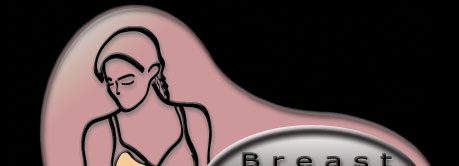2500 BC
Minoan women on the island of Crete wear bra-like
garments that lift the bare breast out of their clothing.
~450BC-285AD
Roman and Greek women choose restraint instead
for their fashions - using a band strapped around their breasts to
reduce their bust size.
1550s AD
Catherine de Médicis, wife of King Henri II of France enforces ban
on "thick waists" at court functions through the introduction of the
steel corset. The corset becomes the dominant undergarment (in various
designs) of support and restraint for the next 350 years.
1850s
US patents registered for first known bra-like devices.
1850s
Corsets fall out of style for about 10 years.
1860s
Corsets come back in fashion with a vengeance. Severe corset "training"
is common which reduces waists to such unhealthy levels that ribs and
internal organs become deformed. Controversy over corseting health
risks ensues.
1875
Designer Susan Taylor Converse creates a no-bones/eyelets/laces/pulleys
garment called the "Union Under-Flannel", made from wool fabrics.
Manufacturers George Frost and George Phelps patent it. [1]
1889
Corset-maker Herminie Cadolle invents a bra-like garment called
"Bien-être" ('Well-Being'.) Resembling a "Victorian bikini", its main
differentiating feature from regular corsets is that the breasts are
supported by the shoulders rather than squeezed up from below with
traditional corset designs. Although marketed as a health aid beginning
in 1889 in a Paris department store ad, the item does not gain
widespread notice.
1893
Marie Tucek patents the "Breast Supporter". The garment includes
separate pockets for each breast, shoulder straps, and hook-and-eye
closures, making it the earliest known design to be similar to
modern-day bras.
1907
Vogue magazine first uses the term "brassiere", which comes from the
old French word for 'upper arm'. Before this, bra-like devices were
known by another French term "soutien-gorge" (literally, "throat
support" or "breast support".)
1912
The term "brassiere" first appears in the Oxford
English Dictionary.
1913
Dissatisfied with the idea of having to wear a heavy corset underneath
a new sheer evening gown she just bought for a social event, socialite
Mary Phelps Jacob improvises a garment from two silk handkerchiefs
and some ribbon.
1914
After considerable interest from friends, Mary Phelps Jacob applies
for a patent (under the business name "Caresse Crosby") on November 3
for her "Backless Brassiere" design, which is basically the same
garment that she previously improvised. This "brassiere" was very
lightweight, soft, and separated the breasts naturally. Unlike Marie
Tucek's 1893 design, Jacob's garment did not have cups to support the
breasts, but flattened them instead. Jacob markets the "Backless
Brassiere" garment until she tires of the business and sells the
patent to Warner Brothers Corset Company in Bridgeport, Connecticut,
for $1,500. Warner's reportedly made over 15 million dollars over the
next 30 years from the patent.
1914-1918
World War I forces women into the work-force. Many women begin working
in factories and wearing uniforms, making the use of daily corset wear
a problem.
1917
The U.S. War Industries Board requests women to stop buying corsets to
reduce the consumption of metal. Sources say up to 28,000 tons of
metal was conserved through this effort - "enough to build two
battleships."
1920s
Warner introduces a tight, chest-flattening bra, in keeping with
the Flapper styles of the day.
1928
Ida Rosenthal, a Russian immigrant, and her husband William found
Maidenform. Ida is responsible for the creation of bust size
categories (cup sizes) and developed bras for every stage of life -
puberty to maturity.
1930s
The shortened form of the word "brassiere" -
the "bra" becomes popular.
1930s
Warner produces the first popular all-elastic
bra, which shows off a woman's curves.
1935
Warner's creates the cup sizing system (A to D),
which becomes the system commonly used by all manufacturers throughout
the world.
1941-1945
Common fabric materials (cotton, rubber, silk
and steel) are in short supply, so manufacturers turn to synthetic fabrics.
1946
The first bikini swimwear is introduced in Paris.
Sources:
www.inventions.org/.../jacob.html
inventors.about.com/.../aa042597.htm
www.louisville.edu/.../brahistory.htm
www.discovery.com/.../deadinventors.html
www.shh-lingerie.com/Store/ [1 - Discrepancy about 1875 events/names]

